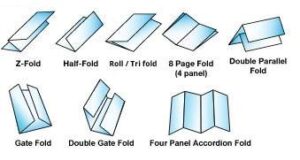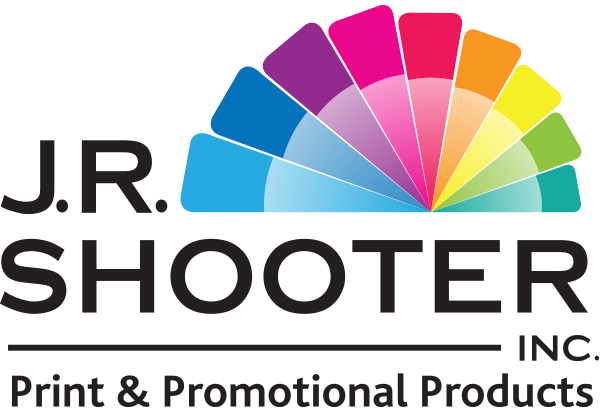The Art of Brochure Folds
Brochures are versatile marketing tools designed to convey information about a product, service, or organization in a visually appealing and concise format. Various types of brochure folds cater to different purposes as well as presentation styles. The two most common brochure sizes are 8.5 x 11 and 11 x 17. However, they can go up to a size of 17 x 22 or even 25.5 x 11. Here’s an overview of some of the most common types of brochures:
Bi-Fold Brochures:
Bi-fold brochures are the simplest form, consisting of a single sheet of paper folded in half to create four panels. As well, they are cost-effective and suitable for conveying basic information or for events with a limited agenda.
Tri-Fold/ Roll-Fold Brochures:
Tri-fold or Roll-fold brochure folds are a popular choice, featuring two folds to create six panels. They offer a balanced layout with sections for headers, images, and detailed information. This type of fold is practical for organizing information chronologically or guiding the reader through a narrative, therefore making it suitable for storytelling or event timelines. Tri-fold brochures are versatile and widely used for a variety of purposes, from marketing materials to event programs and much more.
Gate Fold Brochures:
Gate fold brochures feature two side panels that fold inward to meet in the center, resembling a gate opening. This design is impactful for revealing a central message or image and is often chosen for product launches or promotional campaigns.
Z-Fold Brochures:
Z-fold brochures fold into a Z-shaped pattern, allowing for multiple panels to be displayed sequentially. This format is suitable for presenting step-by-step information or guiding the reader through a process, making it effective for instructional or informational brochures. Also, when the contact information is at the bottom of the back page, once folded, this allows for the information to be visible.
Accordion Fold Brochures:
Accordion fold brochures resemble the folds of an accordion, with multiple parallel folds creating a compact and expandable design. They are ideal for presenting content in a structured manner, with each brochure fold revealing a new section of information. Of course, the larger the sheet of paper, the more folds the paper allows for.
Die-Cut Brochures:
Die-cut brochures feature custom shapes or cutouts, adding a unique and eye-catching element to the design. This type of brochure is often used for creative and artistic purposes, creating a memorable visual impact.
Double Parallel Fold Brochures:
Double parallel fold brochures involve folding the paper in half and then folding it in half again in the same direction. This creates a compact and organized layout with four distinct panels on each side, suitable for content that follows a linear progression.
In Conclusion
Choosing the right type of brochure depends on the content, purpose, and design preferences. Each style offers a unique presentation format to effectively convey information and capture the attention of the target audience.


